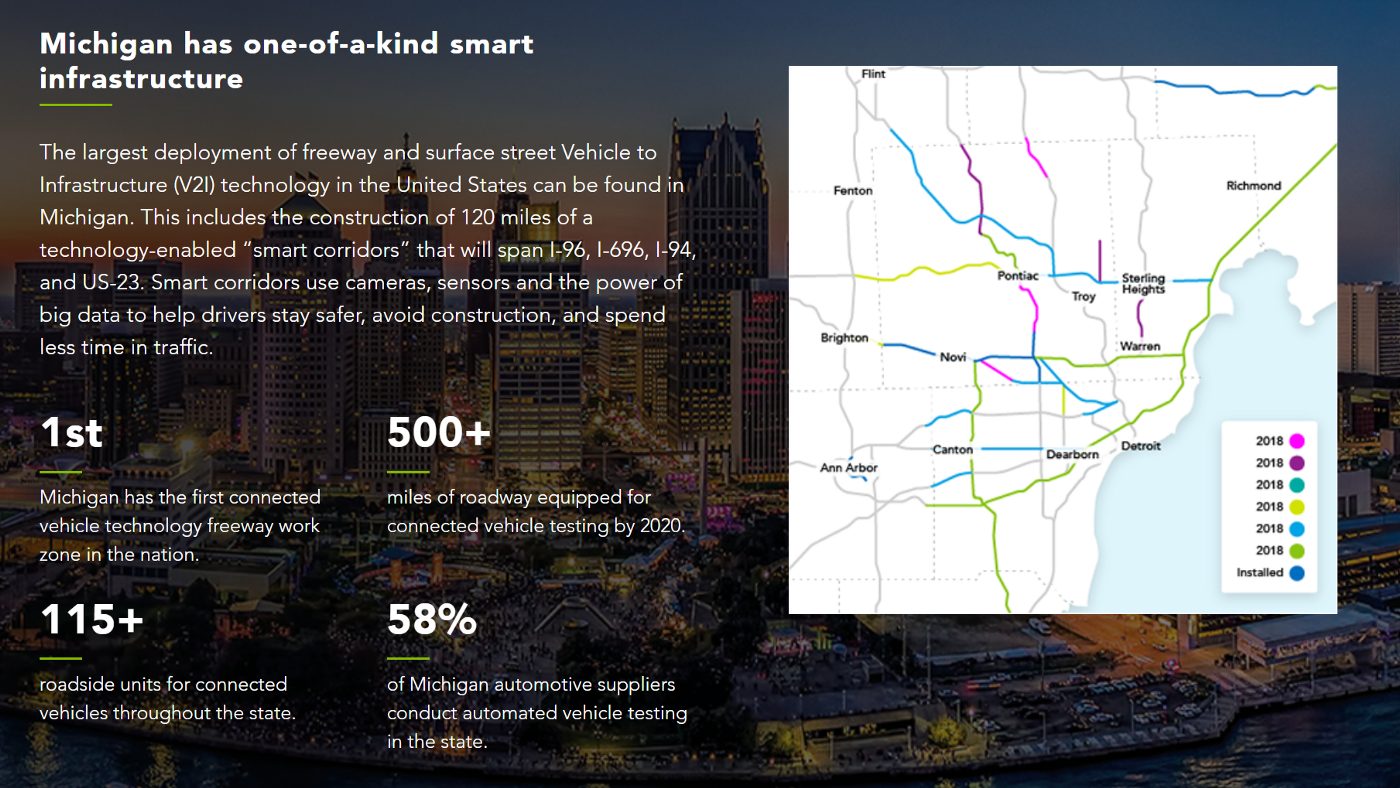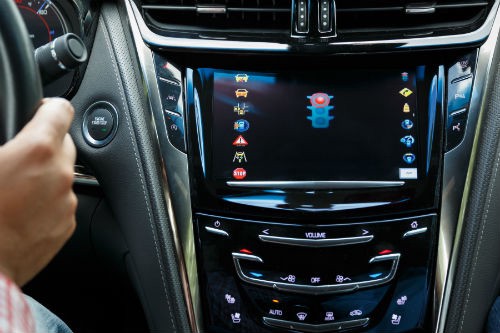PAVE: How is Michigan preparing for AVs? What steps have you already taken?
MDOT has deployed a connected vehicle ecosystem that enables reliable, secure V2I data exchanges in order to support cooperative automated transportation. These data exchanges have the potential to improve traveler safety, mobility, equity, and efficiency.
We believe that the general public still has some room to grow in trusting automated vehicles. This can be achieved by allowing the public to experience these technologies in real life settings and applications such as delivery services, low speed shuttles, ride sharing, etc.
Infrastructure owners and operators can take action to attract attention and more widespread understanding and acceptance of automated vehicles. For example, MDOT and the State of Michigan have sponsored several Mobility challenges to support the use of new automated vehicle technologies to support mobility for the general public, as well as target populations such as persons with disabilities.
PAVE: What is the most important thing you’ve learned from your work with AVs?
Collaboration and communication are key. MDOT has continuously collaborated and communicated with Original Equipment Manufacturers (OEMs) and mobility service providers in the planning, testing, and demonstrations of Connected and Automated Vehicles (CAV) applications.
This allows MDOT to work with the industry to support achieving positive impacts on safety, mobility, equity, and efficiency utilizing CAVs.
PAVE: What AV deployments or tests have taken place in your area?
Below is a list of the most notable CAV projects in MDOT’s portfolio:
- MDOT + DERQ:
As a part of MDOT and the PlanetM Startup Grant pilot, Derq was able to launch two of their V2X applications. The software Derq provides monitors vehicle-to-infrastructure and vehicle-to-pedestrian interactions to predict and prevent collisions.
- MDOT + Peloton:
MDOT partnered with Peloton to test driver-assistive truck platooning on I-96. Peloton’s system automates speed and determines optimum following distance, resulting in safe conditions and fuel savings.
- MDOT + TARDEC:
The Army’s vehicles in this convoy, two M915 ‘line haul’ tractors carrying flatbed trailers loaded with cargo containers, were each equipped with TARDEC’s Autonomous Mobility Appliqué System technology. This technology enables a full range of capabilities from driver-warning features to fully autonomous operation, which can move the vehicle along a path using pre-programmed waypoints. This was the first time the Army had tested this capability on a public roadway.
- MDOT + The Ontario Ministry of Transportation, Continental, MAGNA:
MDOT’s partnership efforts continued with the cross-border automated drive, where two automated driving vehicles traveled more than 300 miles throughout Southeast Michigan before departing to and returning from parts of Canada. MDOT, Continental, Magna and The Ontario Ministry of Transportation was able to test automated technology in a variety of real-world settings.
- GM:
The Michigan Department of Transportation collaborated with General Motors’ Research and Development to demonstrate smart signal technology in Macomb County. GM development vehicles were able to receive data from the traffic controllers on signal phasing and timing.
- 3M:
In 2017, MDOT partnered with 3M to use connected vehicle technologies along more than three miles of I-75. 3M provided MDOT with all-weather lane markings, retro-reflective signs with smart sign technology and dedicated short range communication (DSRC) devices for vehicle to infrastructure communications.
Following this deployment was a permanent smart sign installation in Oakland County. We continued our partnership with 3M along with the Road Commission for Oakland County (RCOC). The installed signs enabled connected and automated vehicles to interpret embedded messages not visible to the human eye. This permanent installation allows for year-round testing. Watch the video.
- MDOT + MOBILEYE:
The agreement creates a pilot program for Mobileye’s retrofit technology that will include the following organizations: Michigan Department of Transportation, Michigan Economic Development Corporation/PlanetM, and is expected to be rolled out to several Michigan counties, transit and police agencies as well. Set to run for six months to take advantage of Michigan’s winter road conditions, the pilot would feature installing Advanced Driver Assist Systems (ADAS) equipment in up to 100 fleet vehicles to demonstrate reduction in collisions and help collect data that could be useful to enhance safety and efficiency for Michigan’s fleets.
Read more about Michigan’s efforts in automated vehicle technology on their website or follow them on social media @MichiganDOT.






